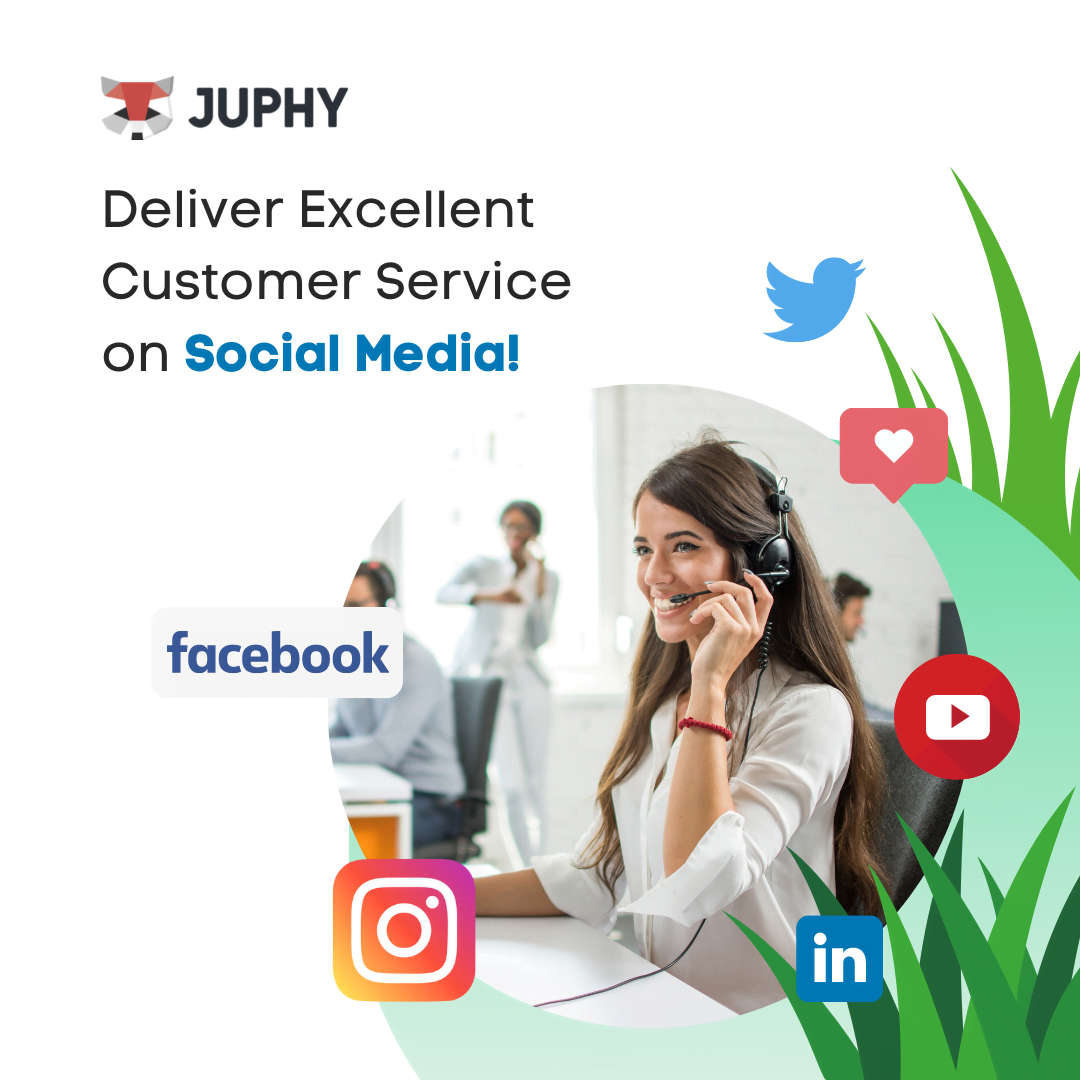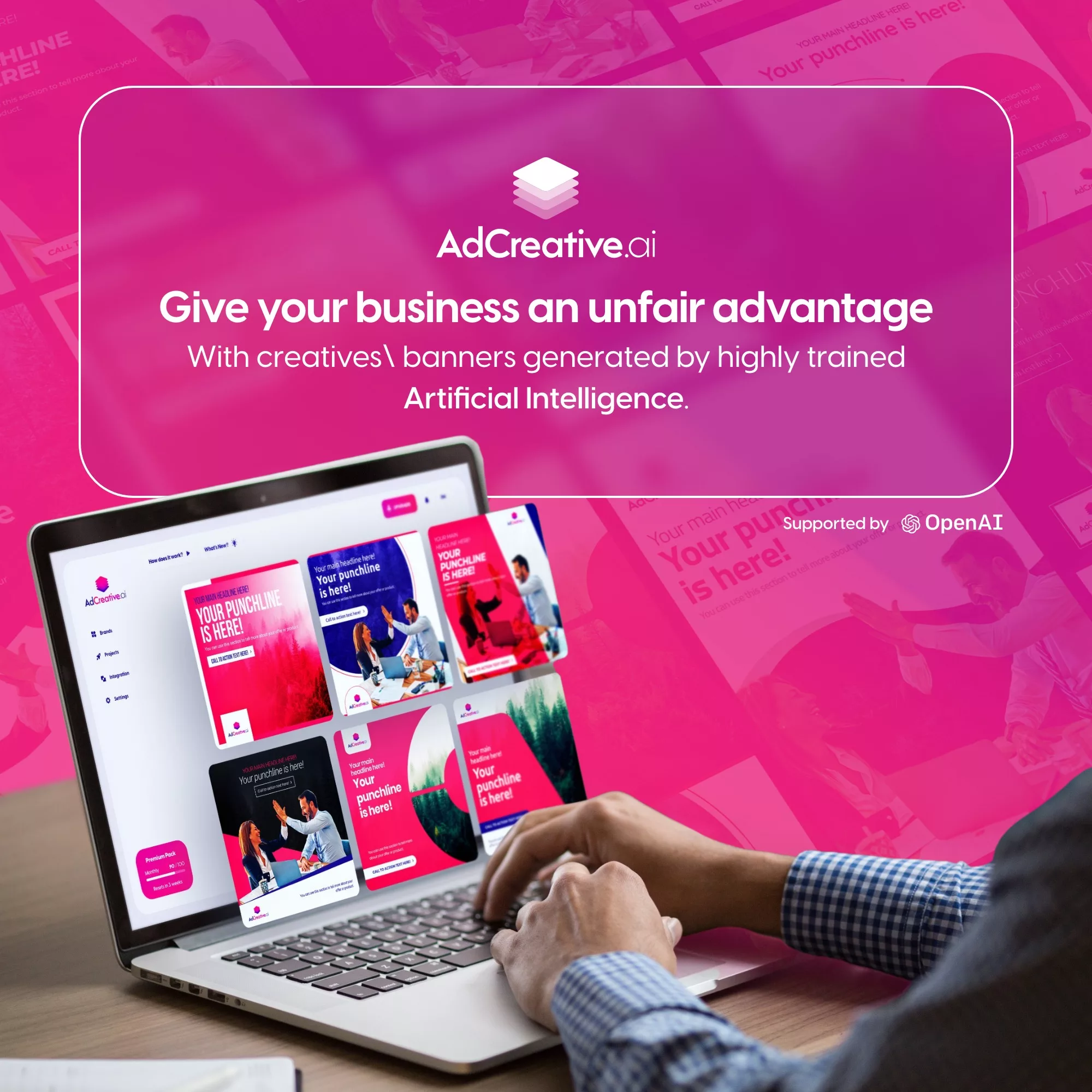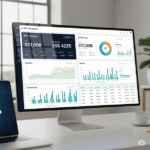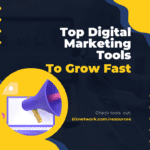
Picture this scenario: you’ve created what you believe is an amazing product or service, launched your marketing campaign with enthusiasm, and then watched in dismay as your message seems to disappear into the digital void. Sound familiar? You’re not alone in this frustration. The difference between businesses that thrive and those that struggle often comes down to one fundamental factor: knowing exactly who their target audience is and how to reach them effectively.
Finding your target audience isn’t just about throwing darts at a demographic board and hoping something sticks. It’s about understanding the people who genuinely need what you’re offering and discovering where they spend their time, what problems keep them awake at night, and what solutions they’re actively seeking. Think of it as detective work, where every clue you uncover brings you closer to building meaningful connections with the people who matter most to your business success.
In this comprehensive guide, we’ll walk through proven strategies that will help you identify your ideal customers quickly and efficiently. You’ll learn practical techniques that don’t require a massive budget or years of experience, along with actionable steps you can implement immediately to start attracting the right people to your business.
Understanding the Foundation: What Exactly is a Target Audience?
Before diving into the how-to steps, let’s establish a clear understanding of what we mean by “target audience.” Your target audience represents the specific group of people who are most likely to be interested in your products or services. These individuals share common characteristics, behaviors, interests, and needs that align with what your business offers.
Think of your target audience as the intersection between what you provide and what people actually want. It’s not about casting the widest possible net and hoping to catch something valuable. Instead, it’s about using a precision fishing approach where you know exactly what type of fish you’re trying to catch, what bait they prefer, and where they’re most likely to be swimming.
Many entrepreneurs make the mistake of thinking “everyone” is their target audience. While this might seem like a smart business strategy at first glance, it’s actually one of the fastest ways to waste resources and dilute your message. When you try to speak to everyone, you end up speaking to no one effectively.
Why Finding Your Target Audience is Critical for Business Success
Understanding your target audience creates a ripple effect of benefits throughout your entire business operation. When you know who you’re serving, every decision becomes clearer and more focused. Your marketing messages become more compelling because they address specific pain points and desires. Your product development becomes more targeted because you understand exactly what features and benefits matter most to your customers.
Consider how this knowledge transforms your marketing budget efficiency. Instead of spreading your advertising dollars across broad, generic campaigns, you can invest in highly targeted approaches that reach the people most likely to convert. This focused strategy typically results in higher conversion rates, lower customer acquisition costs, and better return on investment.
Furthermore, when you understand your audience deeply, you can anticipate their needs and stay ahead of market trends. This insight allows you to develop products and services that solve real problems, rather than creating solutions in search of problems. You’ll also be able to choose the most effective communication channels and craft messages that resonate on an emotional level.
Common Pitfalls That Lead Businesses Astray
Many businesses fall into predictable traps when attempting to identify their target audience. One of the most common mistakes is relying too heavily on assumptions rather than actual data. You might think you know who your customers are based on your initial business plan or personal preferences, but these assumptions often prove incorrect when confronted with real-world evidence.
Another frequent error involves confusing demographics with your actual target audience. While age, income, and location provide useful starting points, they don’t tell the complete story. Two people might share identical demographic profiles but have completely different motivations, values, and purchasing behaviors. This is why successful audience identification goes beyond surface-level characteristics to understand deeper psychological and behavioral patterns.
Some entrepreneurs also make the mistake of defining their target audience too broadly in an attempt to maximize their potential market. However, trying to appeal to too many different groups simultaneously often results in messaging that feels generic and fails to connect meaningfully with anyone.
Starting Your Research: Analyzing Your Current Customer Base
The most logical place to begin your target audience research is with the customers you already have. These individuals have already demonstrated interest in your offerings by making purchases or engaging with your business. They represent real-world validation of your value proposition and provide concrete data about who finds your products or services appealing.
Start by gathering information about your existing customers through multiple channels. Review your sales data to identify patterns in purchasing behavior, transaction amounts, and frequency of purchases. Look at your customer service interactions to understand common questions, concerns, and feedback themes. Examine your email marketing metrics to see which messages generate the highest engagement rates and which segments respond most positively to different types of content.
If you have access to customer contact information, consider conducting brief surveys or interviews to gather more detailed insights. Ask questions about their challenges, goals, preferred communication channels, and what initially attracted them to your business. These conversations often reveal surprising insights that purely quantitative data might miss.
Pay particular attention to your most valuable customers – those who make repeat purchases, refer others, or engage most actively with your brand. These individuals often represent the core of your ideal target audience and can provide valuable insights into the characteristics and behaviors you should prioritize when seeking new customers.
Conducting Effective Market Research Without Breaking the Bank
Market research doesn’t have to involve expensive consulting firms or complex statistical analysis. With the right approach, you can gather valuable insights using readily available tools and techniques that fit within most budgets.
Online surveys represent one of the most cost-effective research methods available today. Platforms like Google Forms, SurveyMonkey, and Typeform allow you to create professional surveys and distribute them through various channels. Focus your questions on understanding pain points, preferred solutions, shopping behaviors, and communication preferences. Keep surveys concise to improve completion rates, and consider offering small incentives to encourage participation.
Social media platforms offer treasure troves of audience insights that many businesses overlook. Facebook’s Audience Insights tool provides detailed demographic and behavioral data about users interested in topics related to your industry. Twitter’s advanced search functionality allows you to monitor conversations and identify trending topics within your niche. LinkedIn offers powerful targeting options that can help you understand professional audiences and industry-specific interests.
Don’t underestimate the value of direct observation and interaction. Spend time in online communities where your potential customers gather. Join relevant Facebook groups, participate in industry forums, and monitor Reddit discussions related to your field. Listen to the language people use when describing their problems and the solutions they seek. This ethnographic approach often reveals insights that formal surveys miss.
Learning from Your Competition’s Audience
Your competitors have already invested time and resources in identifying their target audiences, and you can learn valuable lessons from their efforts. This doesn’t mean copying their strategies wholesale, but rather understanding the landscape and identifying opportunities they might have missed.
Start by analyzing your competitors’ marketing messages, social media content, and advertising campaigns. What demographics do they seem to be targeting? What pain points do they address in their messaging? Which benefits do they emphasize most heavily? Look for patterns across multiple competitors to identify industry standards and common approaches.
Pay attention to where your competitors are advertising and which platforms they use most actively. If several competitors are investing heavily in particular channels, it suggests those platforms likely contain substantial numbers of your shared target audience. However, also look for underutilized channels that might represent opportunities for you to connect with potential customers without as much competition.
Examine your competitors’ customer reviews and social media comments to understand what their audience values most and where gaps might exist in the current market offerings. Negative reviews can be particularly illuminating, as they reveal unmet needs and frustrations that your business might be able to address more effectively.
Leveraging Social Media Analytics for Audience Insights
Social media platforms provide unprecedented access to detailed audience data that was previously available only through expensive market research studies. Each major platform offers analytics tools that reveal valuable information about user demographics, interests, and behaviors.
Facebook’s analytics suite provides comprehensive insights into your page followers and people who engage with your content. You can discover demographic breakdowns, geographic locations, peak activity times, and even interests and behaviors beyond what they share on your page. This information helps you understand not just who your current audience is, but also how to reach similar people more effectively.
Instagram Insights offers similar demographic data along with information about when your audience is most active and which types of content generate the highest engagement. The platform’s Story analytics can reveal which content formats resonate most strongly with your audience and provide insights into viewing behaviors that can inform your content strategy.
LinkedIn’s analytics focus more heavily on professional demographics and can be particularly valuable for B2B businesses. You can learn about your audience’s job titles, industries, company sizes, and professional interests. This information proves invaluable when crafting content and campaigns that speak directly to professional pain points and aspirations.
Creating Detailed Customer Personas
Customer personas represent fictional characters that embody the key characteristics, motivations, and behaviors of your ideal customers. Think of them as detailed character sketches that help you humanize your target audience and make more informed decisions about how to reach and serve them effectively.
Effective personas go far beyond basic demographic information to include psychographic details that influence purchasing decisions. Consider their daily routines, professional challenges, personal goals, preferred communication styles, and decision-making processes. What keeps them awake at night? What would make their lives significantly easier or better?
When creating personas, base them on real data rather than assumptions or wishful thinking. Combine insights from your customer research, market analysis, and competitive intelligence to build comprehensive profiles that accurately represent your audience segments. Most businesses benefit from developing three to five distinct personas that capture their primary customer types.
Give each persona a name, photo, and detailed background story to make them feel more real and memorable. Include information about their technology usage, media consumption habits, shopping preferences, and influences on their decision-making process. The more vivid and specific you can make these personas, the more useful they’ll be in guiding your marketing and business development efforts.
Understanding the Difference Between Demographics and Psychographics
While demographics provide important foundational information about your audience, psychographics offer deeper insights into what truly drives their behavior and decision-making processes. Demographics tell you who your customers are, while psychographics reveal why they make the choices they do.
Demographic factors include age, gender, income, education level, geographic location, and family status. This information helps you understand the basic framework of your audience and can be useful for media planning and initial targeting. However, demographic data alone rarely provides enough insight to create compelling marketing messages or develop products that truly resonate with your audience.
Psychographic factors delve into personality traits, values, attitudes, interests, and lifestyle choices. They reveal what motivates your audience, what they care about deeply, and how they prefer to spend their time and money. Understanding these psychological drivers allows you to craft messages that connect on an emotional level and position your offerings as solutions to their most pressing concerns.
The most effective targeting strategies combine both demographic and psychographic insights to create multi-dimensional audience profiles. For example, knowing that your target customer is a 35-year-old working mother (demographic) who values work-life balance and seeks convenient solutions (psychographic) provides a much richer foundation for marketing strategy than either piece of information alone.
Recognizing Behavioral Patterns in Your Audience
Understanding how your target audience behaves online and offline provides crucial insights for developing effective marketing strategies and customer experiences. Behavioral analysis goes beyond what people say they do to examine what they actually do, which often reveals important discrepancies.
Online behavioral patterns include website navigation habits, social media engagement preferences, email interaction patterns, and purchasing pathways. Use web analytics tools to understand how visitors move through your website, which pages hold their attention longest, and where they typically exit. This information reveals what content resonates most strongly and where friction points might exist in your customer journey.
Purchase behavior analysis examines when people buy, what factors influence their decisions, how they research before purchasing, and what triggers them to make repeat purchases. Look for patterns in seasonal fluctuations, price sensitivity, bundling preferences, and the typical length of consideration periods before purchase decisions.
Social behavior patterns reveal how your audience interacts with content, what they share with others, which influencers they follow, and how they participate in online communities. Understanding these patterns helps you identify the most effective channels for reaching your audience and the types of content that encourage engagement and sharing.
Essential Tools for Audience Research
The modern entrepreneur has access to an unprecedented array of tools for understanding and reaching target audiences. Many of these tools are available for free or at low cost, making professional-grade audience research accessible to businesses of all sizes.
Google Analytics provides comprehensive insights into website visitor behavior, demographic characteristics, and interest categories. The platform’s audience reports reveal valuable information about user locations, devices, acquisition channels, and on-site behavior patterns. Set up goal tracking to understand which audience segments are most likely to convert and what actions they take before making purchases.
Facebook’s Audience Insights tool offers detailed demographic and behavioral data about users interested in specific topics, pages, or locations. You can explore potential audience segments, understand their additional interests, and identify optimal targeting parameters for advertising campaigns. This tool proves particularly valuable for businesses just beginning to understand their audience landscape.
Survey tools like Google Forms, SurveyMonkey, and Typeform enable direct audience feedback collection at minimal cost. Design surveys that focus on understanding customer motivations, preferences, and pain points rather than just gathering basic demographic information. Consider using these tools for both one-time research projects and ongoing customer feedback collection.
Social media management platforms often include audience analytics features that provide insights across multiple platforms from a single dashboard. Tools like Hootsuite, Buffer, and Sprout Social offer audience demographic breakdowns, engagement pattern analysis, and optimal posting time recommendations based on your specific follower behavior.
Testing and Validating Your Audience Assumptions
Once you’ve developed initial hypotheses about your target audience, the next crucial step involves testing these assumptions against real-world evidence. This validation process helps you avoid costly mistakes and ensures your marketing efforts focus on genuinely viable audience segments.
A/B testing provides one of the most effective methods for validating audience assumptions. Create different versions of your marketing messages, landing pages, or advertisements that target different audience segments or appeal to different motivations. Monitor performance metrics to identify which approaches generate the highest engagement, conversion rates, and customer lifetime value.
Small-scale advertising campaigns offer another excellent testing method. Rather than investing large budgets immediately, run modest campaigns targeting different audience segments to gather data about response rates, cost per acquisition, and conversion quality. Platforms like Facebook and Google Ads allow precise targeting and budget control that makes this testing approach both feasible and affordable.
Direct customer feedback through interviews or focus groups can provide qualitative validation of your audience research. While these methods require more time investment, they often reveal insights that quantitative data misses. Pay particular attention to the language customers use when describing their needs and the emotions they express when discussing their challenges.
Measuring Success and Refining Your Approach
Identifying your target audience is not a one-time activity but an ongoing process that requires continuous monitoring and refinement. Market conditions change, customer preferences evolve, and new audience segments may emerge as your business grows and develops.
Establish key performance indicators that help you measure how well you’re connecting with your target audience. These might include metrics like customer acquisition cost, lifetime value, engagement rates, conversion percentages, and customer satisfaction scores. Track these metrics over time to identify trends and opportunities for improvement.
Regular audience research updates ensure your understanding remains current and accurate. Consider conducting annual surveys, reviewing analytics data quarterly, and monitoring social media conversations ongoing. Stay alert for shifts in language, emerging concerns, new platforms where your audience gathers, and changes in purchasing behavior patterns.
Don’t be afraid to pivot your targeting strategy when data suggests your initial assumptions were incorrect or when you discover more profitable audience segments. Successful businesses remain flexible and responsive to evidence rather than rigidly adhering to outdated assumptions about their target market.
READ ALSO: SEO Monitoring Tips, Tools & Metrics You Should Know
Conclusion
Finding your target audience effectively sets the foundation for every other aspect of your business success. When you understand exactly who you’re serving, your marketing becomes more efficient, your products become more relevant, and your customer relationships become stronger and more profitable.
The strategies outlined in this guide provide a systematic approach to audience identification that works for businesses of all sizes and industries. Remember that this process requires patience, attention to detail, and willingness to let data guide your decisions rather than relying solely on assumptions or personal preferences.
Start with the audience research methods that feel most accessible and gradually expand your analysis as you gain confidence and gather more data. The investment you make in understanding your target audience will pay dividends through improved marketing effectiveness, stronger customer relationships, and sustainable business growth.
Your target audience is out there waiting to discover what you have to offer. By following these proven strategies, you’ll be able to find them quickly, connect with them effectively, and build the thriving business you’ve envisioned.
READ ALSO: Become a Top Freelance Digital Marketer in Easy Steps









[…] READ ALSO: Steps to Find Your Target Audience Easily and Fast […]